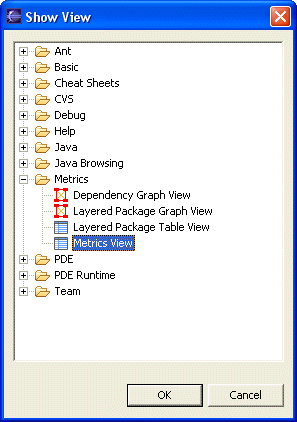Metrics 1.3.6
Metrics是一个十分强大的分析工具,主要分析代码的复杂性。同时可以统计如包的依赖性、代码的有效行数、方法的有效行数、包的数量、属性的数量等等。
Run Eclipse, go to Help menu -> Software Updates -> Find and Install ... On the opening dialog choose Search for new features to install. Add a new Remote site with the following url http://metrics.sourceforge.net/update and follow the instructions for installation.
To use the metrics plugin you have to be in a Java or Java Browsing perspective or any other perspective that shows java resources as source folders, packages and compilation units. The simple resource perspective won't do. This makes sense since the metrics are all about counting aspects of your java code.
To start using the Metrics View, use Windows -> Show View -> Other and navigate to the Metrics View, as shown in the next image.

Initially the resulting view will show a brief usage message because no metrics have been calculated yet. To start collecting metrics for a project, right click on the project and from the popup menu select "Metrics->Enable" (or alternatively, use the properties page ).This will tell Eclipse to calculate metrics every time a compile happens. Now that you've enabled a project, the easiest way to calculate all its metrics is to do a full rebuild of that project. The metrics view will indicate the progress of the metrics calculations as they are being performed in the background. When it's all done, the metrics view will look something like this:

Note that any metric shown in blue can be double-clicked to navigate to the resource causing the maximum value for the metric. Since 1.2.0, the metrics table is actualy a table tree, allowing you to expand each metric to show the values at levels below the selected resource. The child elements at each level are sorted in descending metric (maximum) value order.
